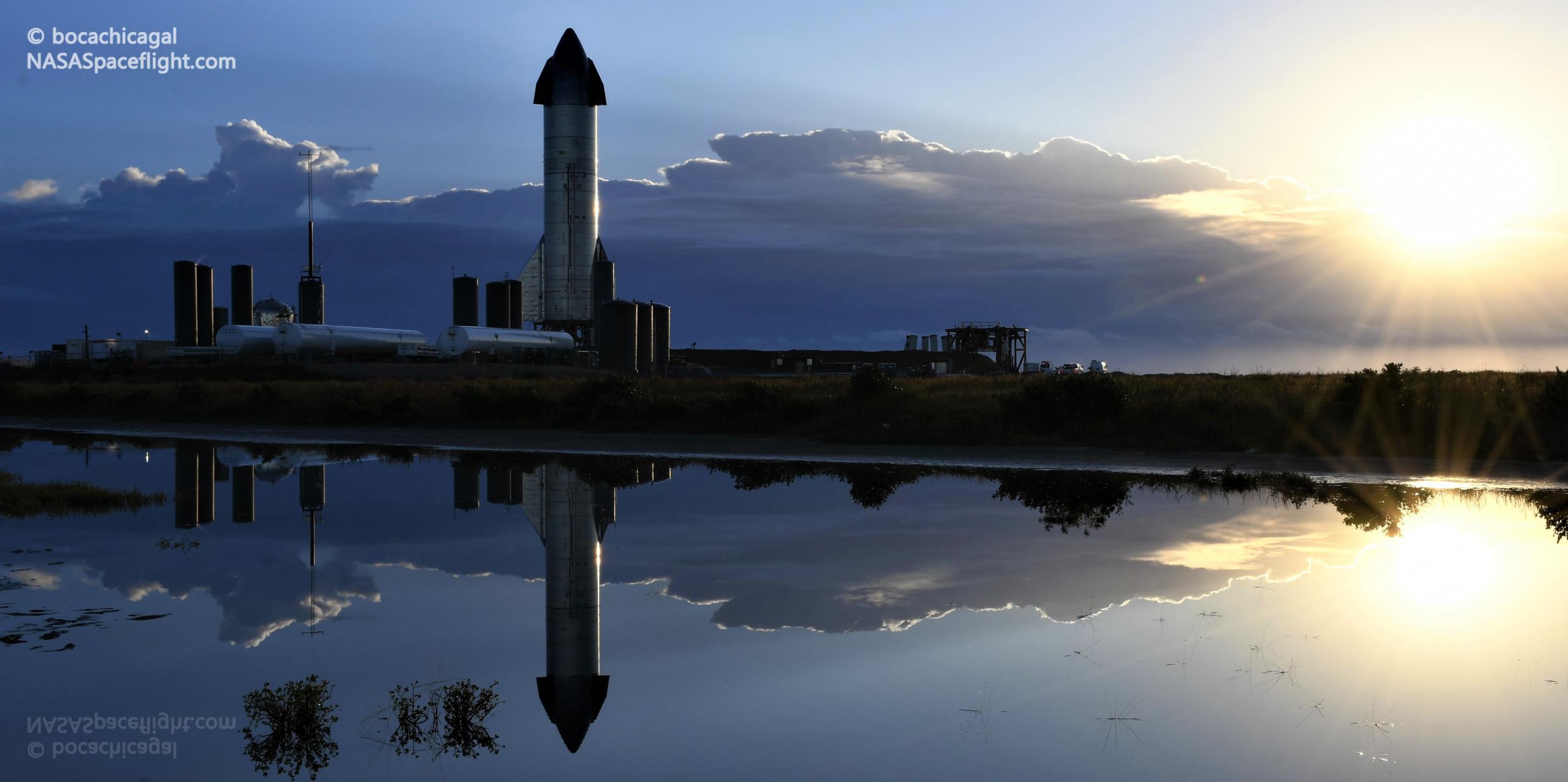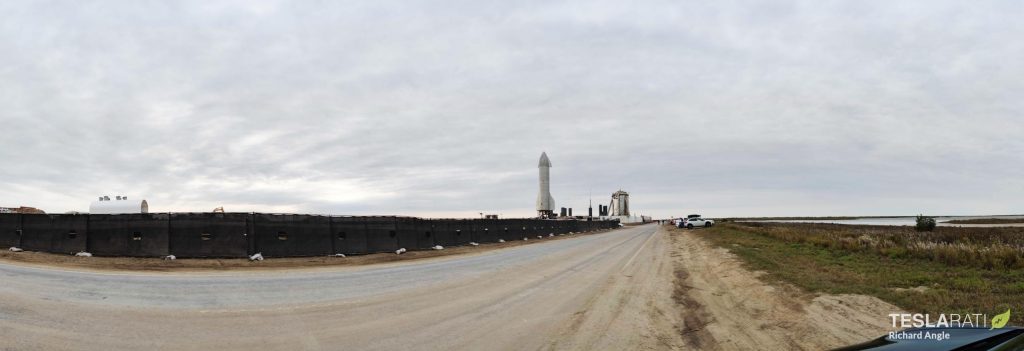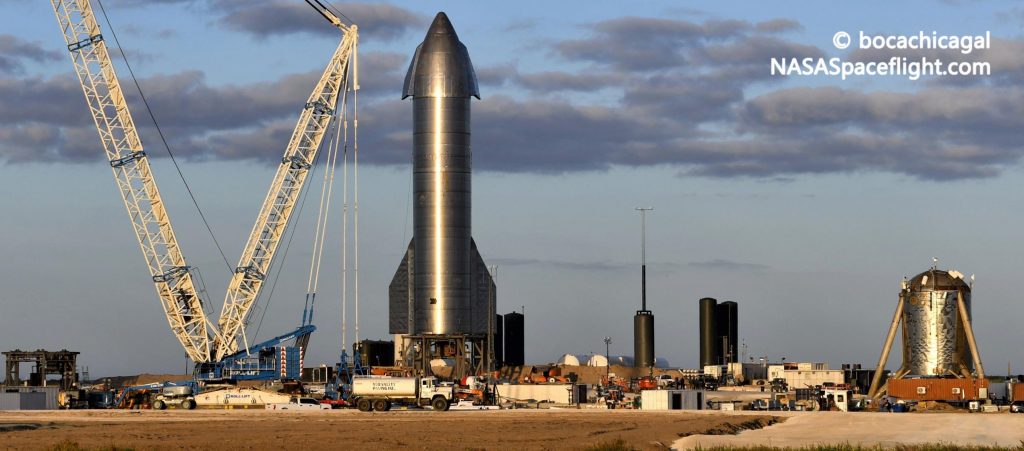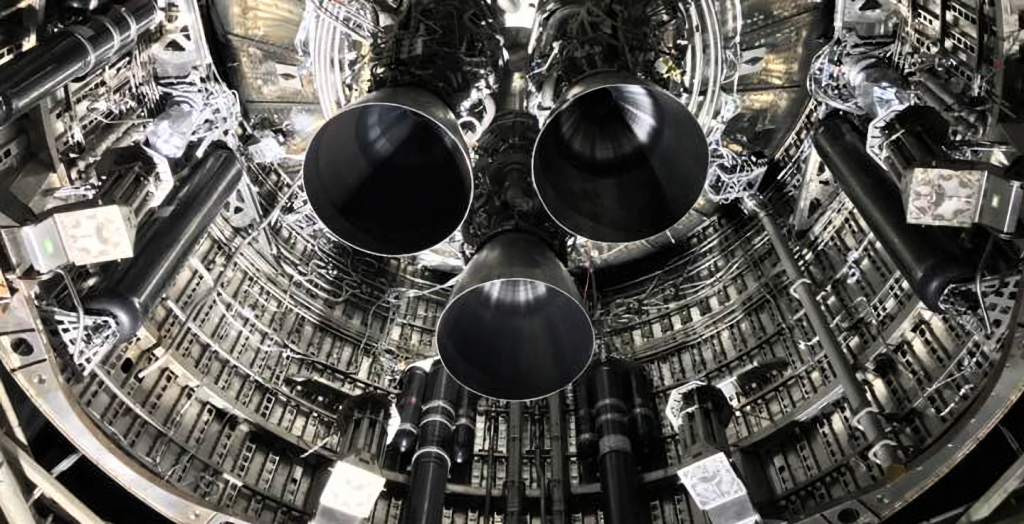

News
(Update: Sunday) SpaceX’s high-altitude Starship launch debut slips to Monday
Update #2: Per new Temporary Flight Restrictions, there’s now a chance that SpaceX has rescheduled Starship’s (now slightly less) high-altitude launch debut on Sunday afternoon, December 6th.
As always with experimental testing, uncertainty remains. Stay tuned for updates as we close in on Starship SN8’s 12.5-kilometer (~7.8 mi) launch debut.
Update: SpaceX’s high-altitude Starship launch debut appears to have slipped to no earlier than (NET) Monday morning, December 7th, and been reduced from 15 km to 12.5 km.
FAA-approved flight restrictions filed on December 2nd were retracted on December 3rd for unknown reasons, ultimately giving SpaceX several more days to prepare Starship SN8 for an ambitious high-altitude launch, coast, freefall, and landing attempt.
Meanwhile, SpaceX has also lowered Starship SN8’s apogee target to 12.5 km (7.8 mi) from 15 km, itself a reduction from 20 km made earlier this year. Why is entirely unclear but it’s likely that the company is in active discussion (and probably arguments) with the FAA, perhaps requiring a compromise to ensure regulatory approval.
It remains to be seen if SpaceX will perform any additional testing over the weekend or if the company will attempt to schedule Starship SN8’s launch debut on Saturday or Sunday. Stay tuned for updates and Elon Musk’s promised SpaceX webcast.

SpaceX has received FAA approval to attempt Starship’s high-altitude launch debut as early as Friday according to a Temporary Flight Restriction (TFR) filed on December 2nd.
SpaceX’s first high-altitude Starship TFR revealed that the crucial flight test is now scheduled sometime between 8 am and 5 pm CST (14:00-23:00 UTC) on Friday, December 4th, with identical backup windows available (and cleared with the FAA) on Saturday and Sunday. Originally scheduled as early as November 30th, the delays are less than surprising given the complexity and unprecedented nature of the flight test facing SpaceX.
Starship serial/ship number 8 (SN8) – the first functional full-height prototype – is tasked with launching from Boca Chica, Texas to an apogee of 15 kilometers (~9.5 miles) and dropping back to Earth to test an unproven approach to rocket recovery.
Often referred to as a bellyflop or skydiver-style attitude, Starship SN8 will attempt to freefall belly-down back to earth, using four large flaps to maintain a stable approach much like skydivers use their arms and legs to control heading and speed. When landing on planets or moons with relatively thick atmospheres, a controlled freefall could save Starship a huge amount of structural mass (no need for wings or actual airfoils) and propellant – a major benefit for what aims to be the largest reusable orbital spacecraft ever built.


Powered by three Raptor engines capable of producing up to 600 metric tons (1.3 million lbf) of thrust at full throttle, SN8’s launch debut will mark Starship’s first multiengine flight – a major milestone for any rocket prototype. SpaceX CEO Elon Musk also recently noted that Starship SN8’s propellant tanks will only be “slightly filled” for its 15 km launch debut, potentially resulting in an extremely healthy thrust to weight ratio at liftoff.
Based on several unofficial estimates, Starship SN8 is also likely to break the sound barrier on ascent, potentially putting the prototype through conditions similar to what an actual orbital launch might see at Max Q (the point of maximum aerodynamic pressure). Further adding to the daunting list of ‘firsts’, SN8’s 15 km debut will be the first Starship hop or flight with a nosecone, making it the first full-scale structural test of a nose section and the methods used to attach it to Starship’s tank section. It’s hard to exaggerate the number of things that could go wrong and the number of ways Starship SN8 could fail during its first flight.
In the interim, SpaceX has taken Starship’s launch delay as an opportunity to perform some kind of additional testing on the evening of December 2nd, involving some kind of cryogenic proof test (using liquid nitrogen) or wet dress rehearsal (WDR; using real liquid methane and oxygen). While there were initial signs that SpaceX would put SN8 through one or several more Raptor static fires before clearing the rocket for flight, it appears that those plans were cancelled earlier this week.
Less testing amplifies the risk that Starship SN8 will fail after liftoff, the probability of which Musk has pegged at ~67%. Regardless, SN8’s launch debut is bound to be spectacular and Starships SN9 and SN10 are nearly ready to take over wherever SN8 leaves off.

News
Tesla China delivery centers look packed as 2025 comes to a close
Needless to say, it appears that Tesla China seems intent on ending 2025 on a strong note.

Tesla’s delivery centers in China seem to be absolutely packed as the final days of 2025 wind down, with photos on social media showing delivery locations being filled wall-to-wall with vehicles waiting for their new owners.
Needless to say, it appears that Tesla China seems intent on ending 2025 on a strong note.
Full delivery center hints at year-end demand surge
A recent image from a Chinese delivery center posted by industry watcher @Tslachan on X revealed rows upon rows of freshly prepared Model Y and Model 3 units, some of which were adorned with red bows and teddy bears. Some customers also seem to be looking over their vehicles with Tesla delivery staff.
The images hint at a strong year-end push to clear inventory and deliver as many vehicles as possible. Interestingly enough, several Model Y L vehicles could be seen in the photos, hinting at the demand for the extended wheelbase-six seat variant of the best-selling all-electric crossover.
Strong demand in China
Consumer demand for the Model Y and Model 3 in China seems to be quite notable. This could be inferred from the estimated delivery dates for the Model 3 and Model Y, which have been extended to February 2026 for several variants. Apart from this, the Model Y and Model 3 also continue to rank well in China’s premium EV segment.
From January to November alone, the Model Y took China’s number one spot in the RMB 200,000-RMB 300,000 segment for electric vehicles, selling 359,463 units. The Model 3 sedan took third place, selling 172,392. This is quite impressive considering that both the Model Y and Model 3 are still priced at a premium compared to some of their rivals, such as the Xiaomi SU7 and YU7.
With delivery centers in December being quite busy, it does seem like Tesla China will end the year on a strong note once more.
News
Tesla Giga Berlin draws “red line” over IG Metall union’s 35-hour week demands
Factory manager André Thierig has drawn a “red line” against reducing Giga Berlin’s workweek to 35 hours, while highlighting that Tesla has actually increased its workers’ salaries more substantially than other carmakers in the country.

Tesla Giga Berlin has found itself in a new labor dispute in Germany, where union IG Metall is pushing for adoption of a collective agreement to boost wages and implement changes, such as a 35-hour workweek.
In a comment, Giga Berlin manager André Thierig drew a “red line” against reducing Giga Berlin’s workweek to 35 hours, while highlighting that Tesla has actually increased its workers’ salaries more substantially than other carmakers in the country.
Tesla factory manager’s “red line”
Tesla Germany is expected to hold a works council election in 2026, which André Thierig considers very important. As per the Giga Berlin plant manager, Giga Berlin’s plant expansion plans might be put on hold if the election favors the union. He also spoke against some of the changes that IG Metall is seeking to implement in the factory, like a 35-hour week, as noted in an rbb24 report.
“The discussion about a 35-hour week is a red line for me. We will not cross it,” Theirig said.
“(The election) will determine whether we can continue our successful path in the future in an independent, flexible, and unbureaucratic manner. Personally, I cannot imagine that the decision-makers in the USA will continue to push ahead with the factory expansion if the election results favor IG Metall.”
Giga Berlin’s wage increase
IG Metall district manager Jan Otto told the German news agency DPA that without a collective agreement, Tesla’s wages remain significantly below levels at other German car factories. He noted the company excuses this by referencing its lowest pay grade, but added: “The two lowest pay grades are not even used in car factories.”
In response, Tesla noted that it has raised the wages of Gigafactory Berlin’s workers more than their German competitors. Thierig noted that with a collective agreement, Giga Berlin’s workers would have seen a 2% wage increase this year. But thanks to Tesla not being unionized, Gigafactory Berlin workers were able to receive a 4% increase, as noted in a CarUp report.
“There was a wage increase of 2% this year in the current collective agreement. Because we are in a different economic situation than the industry as a whole, we were able to double the wages – by 4%. Since production started, this corresponds to a wage increase of more than 25% in less than four years,” Thierig stated.
News
Tesla is seeing a lot of momentum from young Koreans in their 20s-30s: report
From January to November, young buyers purchased over 21,000 Teslas, putting it far ahead of fellow imported rivals like BMW and Mercedes-Benz.

Tesla has captured the hearts of South Korea’s 20s-30s demographic, emerging as the group’s top-selling imported car brand in 2025. From January to November, young buyers purchased over 21,000 Teslas, putting it far ahead of fellow imported rivals like BMW and Mercedes-Benz.
Industry experts cited by The Economist attributed this “Tesla frenzy” to fandom culture, where buyers prioritize the brand over traditional car attributes, similar to snapping up the latest iPhone.
Model Y dominates among young buyers
Data from the Korea Imported Automobile Association showed that Tesla sold 21,757 vehicles to the 20s-30s demographic through November, compared to BMW’s 13,666 and Mercedes-Benz’s 6,983. The Model Y led the list overwhelmingly, with variants like the standard and Long Range models topping purchases for both young men and women.
Young men bought around 16,000 Teslas, mostly Model Y (over 15,000 units), followed by Model 3. Young women followed a similar pattern, favoring Model Y (3,888 units) and Model 3 (1,083 units). The Cybertruck saw minimal sales in this group.
The Model Y’s appeal lies in its family-friendly SUV design, 400-500 km range, quick acceleration, and spacious cargo, which is ideal for commuting and leisure. The Model 3, on the other hand, serves as an accessible entry point with lower pricing, which is valuable considering the country’s EV subsidies.
The Tesla boom
Experts described Tesla’s popularity as “fandom culture,” where young buyers embrace the brand despite criticisms from skeptics. Professor Lee Ho-geun called Tesla a “typical early adopter brand,” comparing purchases to iPhones.
Professor Kim Pil-soo noted that young people view Tesla more as a gadget than a car, and they are likely drawn by marketing, subsidies, and perceived value. They also tend to overlook news of numerous recalls, which are mostly over-the-air software updates, and controversies tied to the company.
Tesla’s position as Korea’s top import for 2025 seems secured. As noted by the publication, Tesla’s December sales figures have not been reported yet, but market analysts have suggested that Tesla has all but secured the top spot among the country’s imported cars this year.








